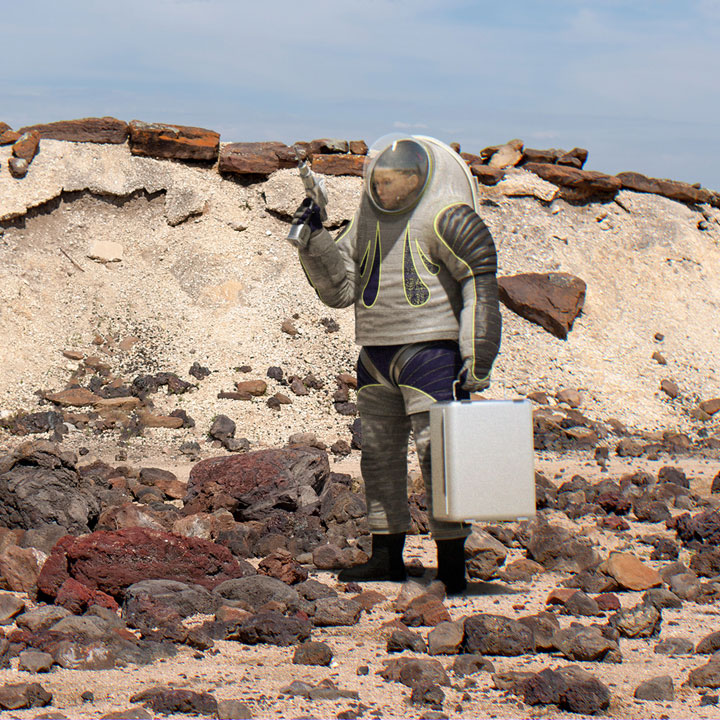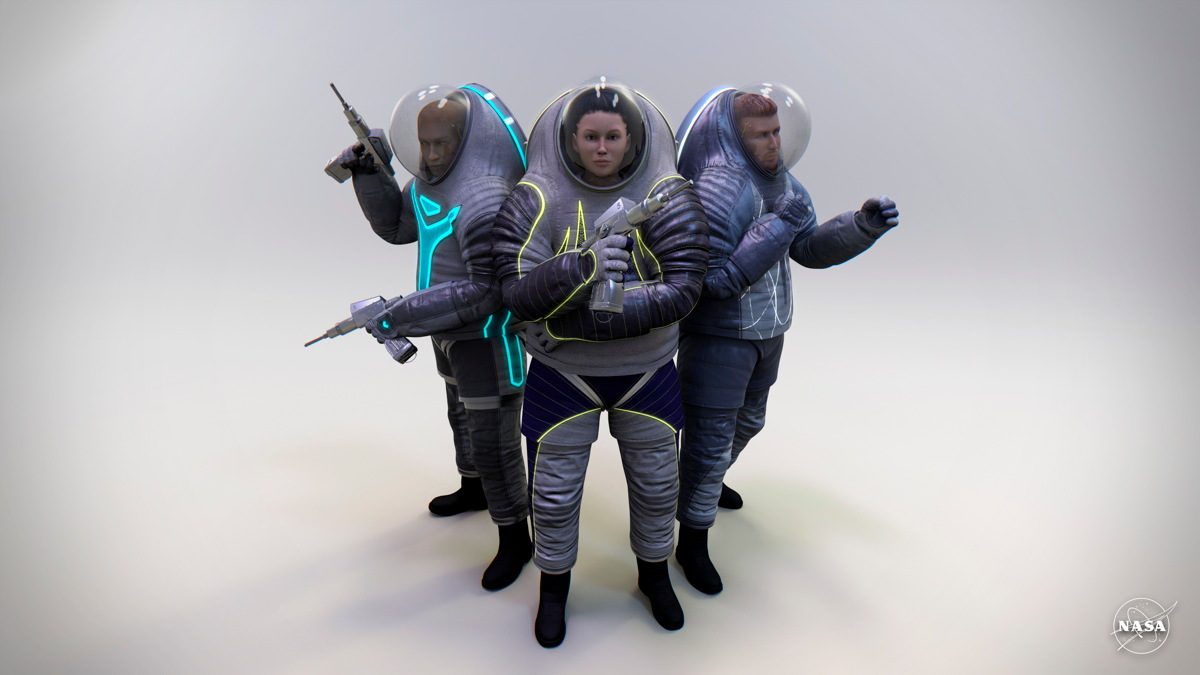Astronauts Need Flexible Spacesuits for Mars

The next couple of decades could see astronauts go to many places: an asteroid, the moon, even Mars.
But the current spacesuits used on the International Space Station (ISS) will likely need replacing to get those exploration jobs done, experts say.
The difficulty with today's suits is they are designed for microgravity work. They would make walking in an environment with substantial gravity difficult, because the lower torso of the suit is stiff, and it's difficult for the wearer to bend at the waist. Better mobility would be needed for doing geologic fieldwork, said Amy Ross, lead of the advanced pressure-garment team at NASA's Johnson Space Center (JSC) in Houston. [NASA's Z-2 Spacesuit in Pictures: Futuristic Astronaut Suit Design Photos]
Future suits will also improve on the design used in the Apollo program, when astronauts needed to bounce to move around on the moon, she said.
"It looks clumsy," she told Space.com, "and part of that is [that] lunar gravity is weird. It's 0.16 [times the] gravity [of Earth]."
But Ross said the Apollo suits were also clumsy because they were made for multiple purposes, including microgravity spacewalks.
"But when you're designing [only for] a planetary-surface walking configuration, it will be different," she said.
Breaking space news, the latest updates on rocket launches, skywatching events and more!
The key will be giving the suits more flexibility in the lower body, allowing astronauts to bend, twist and move around to pick up rocks and other samples on Mars or another remote location. Ross said she hopes that one of the current designs she's working on will also be adequate for microgravity. Astronauts shouldn't need to fight to stay stable on a platform or an asteroid because their leg joints are too flexible, she said.
ISS testing of futuristic spacesuit
One of the spacesuits Ross is currently working on is an advanced prototype called the Z-2. In April 2014, NASA released the design for the futuristic spacesuit based on a public vote. The cover layer that was chosen has electro-luminescent wiring and a gray coloring. Some changes from current NASA spacesuits include a design for walking, and a rear-entry hatch for astronauts to put on the suit.
"One of the big lessons we learned, that took a bit of time out of our schedule, was the resin we selected for the composite components — it was not going to work," Ross said. The viscosity of the resin was not what was needed, she said, but there was a backup resin available that they are now working with.
Construction of Z-2 should be finished by the end of September. After three months of testing to make sure the spacesuit is ready, Ross said, 2016 will likely see tests of the prototype inside a vacuum chamber and also in the Neutral Buoyancy Laboratory, a large swimming pool near JSC that astronauts use to train for spacewalks.
Based on the results, NASA plans to construct a more realistic prototype called the Z-3 that, among other things, would be able to connect to a portable life-support system to keep astronauts alive in space. Testing for Z-3 in space is expected to take place on the ISS around 2020 or 2021, depending on how development goes.
Smart suits
In general, future spacesuits will employ a couple of technology trends that will make it easier for astronauts to understand how the spacesuit is holding up in space, said Nicholas de Monchaux, an associate design professor at the University of California, Berkeley, who wrote a book called "Spacesuit: Fashioning Apollo" (The MIT Press, 2011).
"I could see the military's experiments in digital camouflage (using materials like the e-ink in Amazon Kindle displays) extending to suit surfaces, helping, for example, to regulate temperature," he wrote in an email to Space.com.
"I could also see providing micrometeoroid protection more actively — instead of, for example, using many layers, [I could see] using a self-healing polymer, or some kind of active-repair technology on the suit's surface, where, for example, a polymer or patch could extend or be catalyzed electrically, etc."
Other features of futuristic spacesuits could include "shape memory" to better fit to an astronaut's body shape, sensors in the gloves to make it easier for astronauts to "feel" what they are touching and integrating tiny cameras to help the astronauts see around them, de Monchaux said.
It also will be easier for people at home to follow along with the experience of walking on Mars or floating near an asteroid, even more so than the live broadcasts of the Apollo era, de Monchaux said. In fact, de Monchaux predicts that an astronaut's ability to share the experience with people back on Earth could be a primary reason for sending humans to distant locations.
Follow Elizabeth Howell @howellspace. Follow us @Spacedotcom, Facebook and Google+. Original article on Space.com.

Elizabeth Howell (she/her), Ph.D., was a staff writer in the spaceflight channel between 2022 and 2024 specializing in Canadian space news. She was contributing writer for Space.com for 10 years from 2012 to 2024. Elizabeth's reporting includes multiple exclusives with the White House, leading world coverage about a lost-and-found space tomato on the International Space Station, witnessing five human spaceflight launches on two continents, flying parabolic, working inside a spacesuit, and participating in a simulated Mars mission. Her latest book, "Why Am I Taller?" (ECW Press, 2022) is co-written with astronaut Dave Williams.

